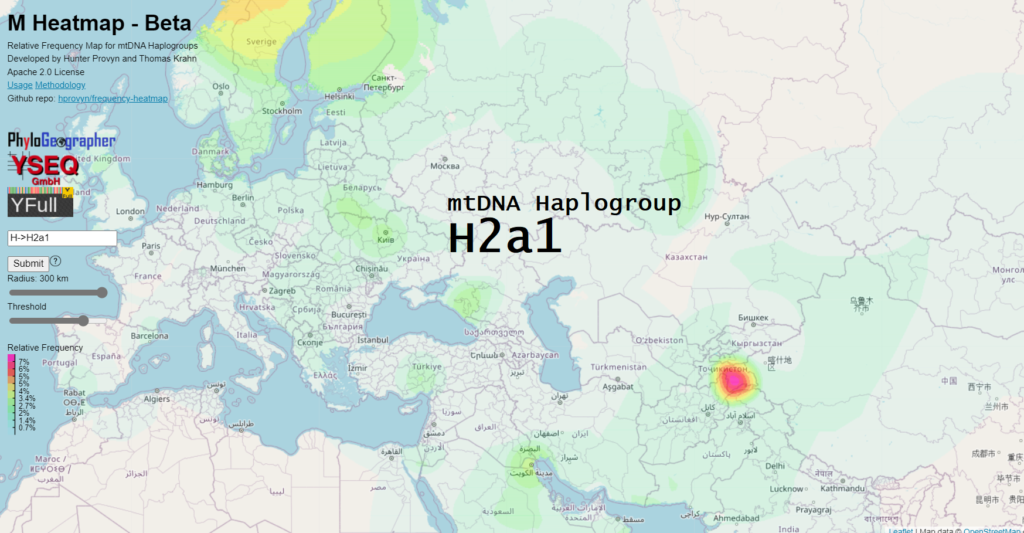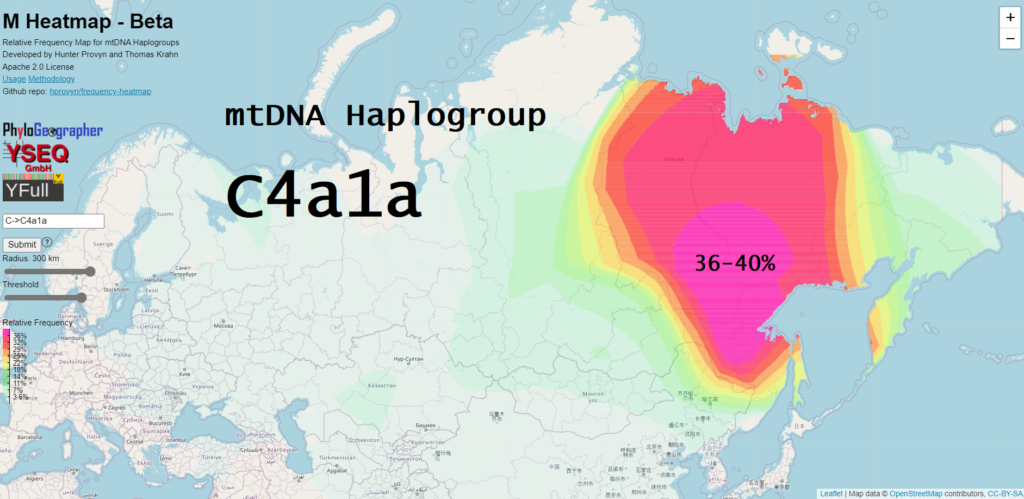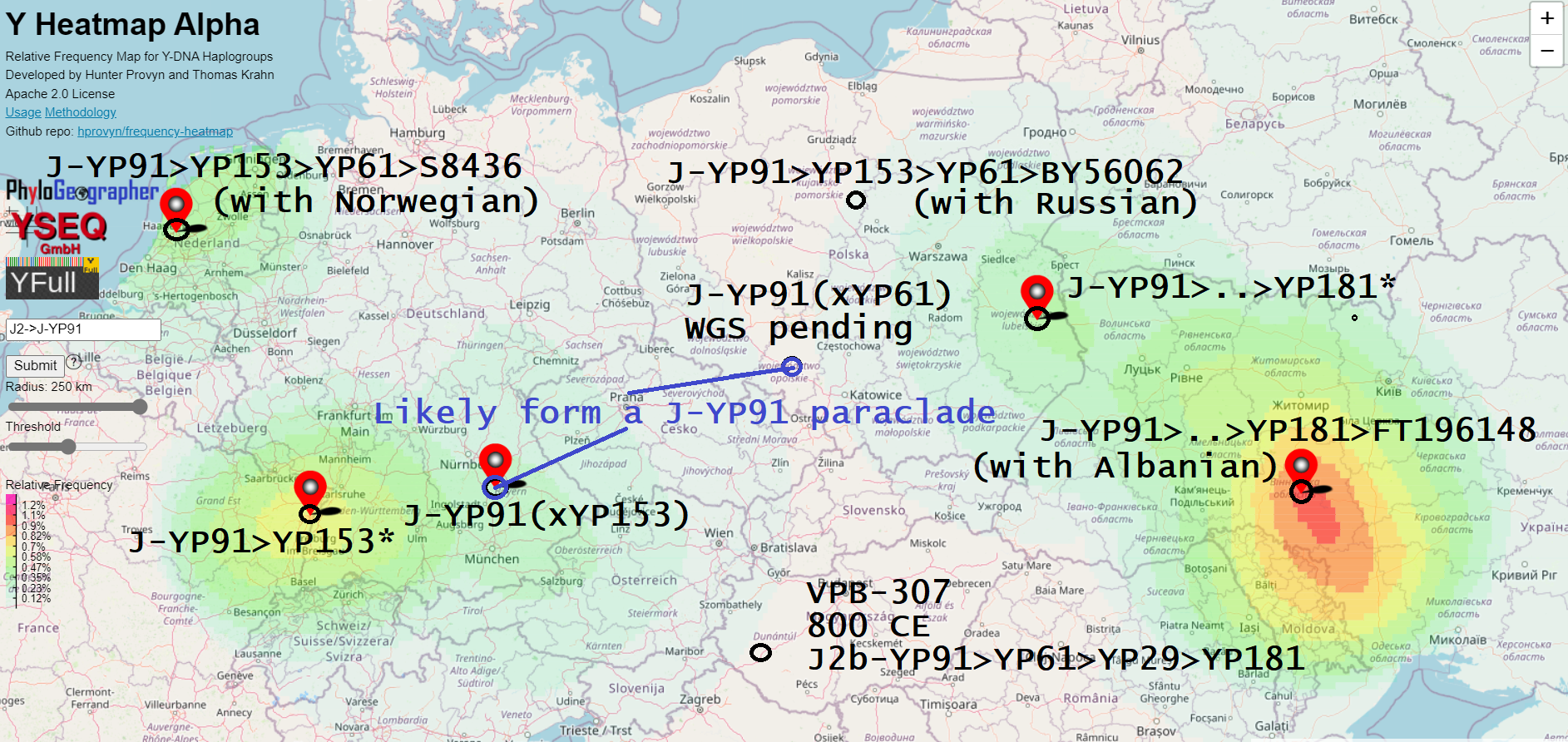A recent study, Whole genome analysis sheds light on the genetic origin of Huns, Avars and conquering Hungarians, contributed three ancient J2b-L283 samples. So with just this one paper the total ancient J2b-L283 samples we have from Hungary increased from one to four. The sample we already had, I4998, dates to 300 BCE from Vas county.

Of the three samples from this study, two of them are descendants of J2b-Z1297, TMRCA 4200 ybp, which is attested as European and more specifically, of broadly western Balkan / Adriatic origin based on ancient sample I26726 from Gudnja Cave dating to 1400 BCE.
The third sample, VPB-307, is from a rare branch of J2b-L283 known as J2b-YP91 that had no prior ancient sample*.
*3156 ybp Sardinia sample ORC007 has a single positive read for YP91 and no coverage for other SNPs in the phylogeny. And so since this is a C > T transition, it may be due to ancient DNA damage. Thus, the YP91 classification is not reliable. - Flor Veseli
VPB-307 Late Avar Elite
VPB-307 was found in a cemetery near Keszthely and dates to the 9th century. The Kezsthely culture, which existed in this area in the centuries prior, is believed to have consisted of Romanized Pannonians that flourished under Avar rule, at least initially.
I had previously predicted that we would likely find J2b-L283 among ancient samples buried in the Keszthely cemeteries.
J2b-L283 in Hungary and the Pannonian Roman Keszthely Culture
This new study included nine samples from one site near Keszthely called Vörs-Papkert-B, five of which were males.
There are only three samples from the study classified as Late Avar elite archaeological culture. The other two are female.
The mtDNA haplogroup of VPB-307 is H2a1x and his next closest relative is a sample from a scientific study from Turkey. Their TMRCA is 2100 ybp. H2a1 is widely distributed across Eurasia and I found ancient samples on the YFull MTree dating from 4400 ybp in both Poland and China.

The closest autosomal match to VPB-307 and extremely close at that (the symbols are adjacent on the PCA), is MM-83, dated to 568-660 CE, Early Avar archaeological culture from the Mikócsa-halom hill near Makó, Hungary. This is right on the border of Romania and not far from Serbia.
The Avar cline
In table S1b, both VPB-307 and MM-83 are autosomally classified as "Avar_cline" PCA position.
Looking at the PCA chart, they are about halfway between the five EU core groups on the left and the Hun_Asia, Avar_Asia core groups on the right. They are actually much closer to the later Conq_Asia core groups than to any of these others.
I think we can attribute the closeness to the later Conq_Asia core groups as a coincidence stemming from the fact that the Uralic groups from which the Conq_Asia_Core are theorized to descend from would have been geographically intermediate between Europe and NE Asia. Their geographic intermediacy, as far as this translates to distance along the EU-Hun/Avar clines, happens to match the approximate admixture of EU and Hun/Avar of VPB-307.
While autosomal DNA comparison can be "fuzzy" and statistical parameters can be configured to portray a desired outcome, it is worth noting that the mtDNA line of MM-83, C4a1a, is unequivocally NE Asian in origin.

So I think that the assertions from the study should be accepted, that both VPB-307 and MM-83 descend from admixed European and later arrivals from Asia such as Huns or Avars.
According to the paper, Xiongnu/Hun-related ancestries were more common in certain cemeteries, including Makó-Mikócsa-halom (MM) where MM-83 was found. Two of two men from that cemetery supposedly had Hun male lines, classified as Q-L715 and Q-YP832 by the study itself.
The closeness on the PCA chart between VPB-307 and MM-83, despite the fact that VPB-307 lived over 200 years later, I think could be due to coincidence given the large variation in admixture between the European and Hun/Avar components of people that lived during that entire period as I see from the PCA. These two individuals living over 200 years apart just happened to have nearly the same proportion of European vs Hun/Avar ancestry.
J2b-YP91 Distribution
J2b-YP91 is mostly found today in men of European descent.
A recent development was the discovery of a sample that split J2b-YP91 by being negative for YP153.
Oberallgäu Bavarian Sample Splits J2b-YP91 and Adds More Diversity North of the Alps
A more recent development was the establishment of an eastern European lineage of J2b-YP91>YP61 known as J-BY56062. While this line may not be much older than 1000 years, based on the number of SNPs, it looks like there are several other distantly related men from eastern Europe in this line that might add to the diversity in eastern Europe if they are NGS tested.

While we know that VPB-307 had significant Avar/Hun or other eastern admixture, this doesn't necessarily mean that any of his other male line relatives under the YP181 branch did. These men all descend from a MRCA who lived about 700 BCE. We don't know precisely where this man, let alone any previous ancestor in J2b-YP91, lived, though Central Europe or somewhere on its periphery to the east looks most likely based on the distribution we have found so far.
Supposedly, after Byzantium defeated the Avars in a battle, there was an Avar civil war, after which, Romanized Pannonians were punished for backing the wrong horse. Perhaps VPB-307, finding himself in a Late Avar elite burial, descended from an ancestor who had backed the right horse in this conflict? Or he could have been from a subjugated ruling family that was allowed to keep their relative position in the society by serving as the Avars' clients.